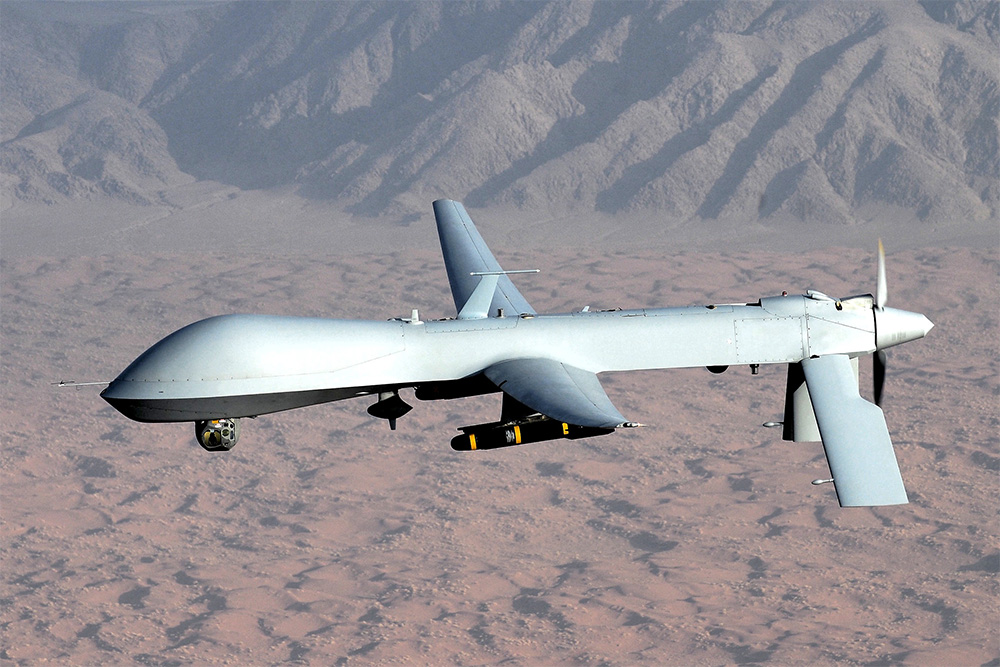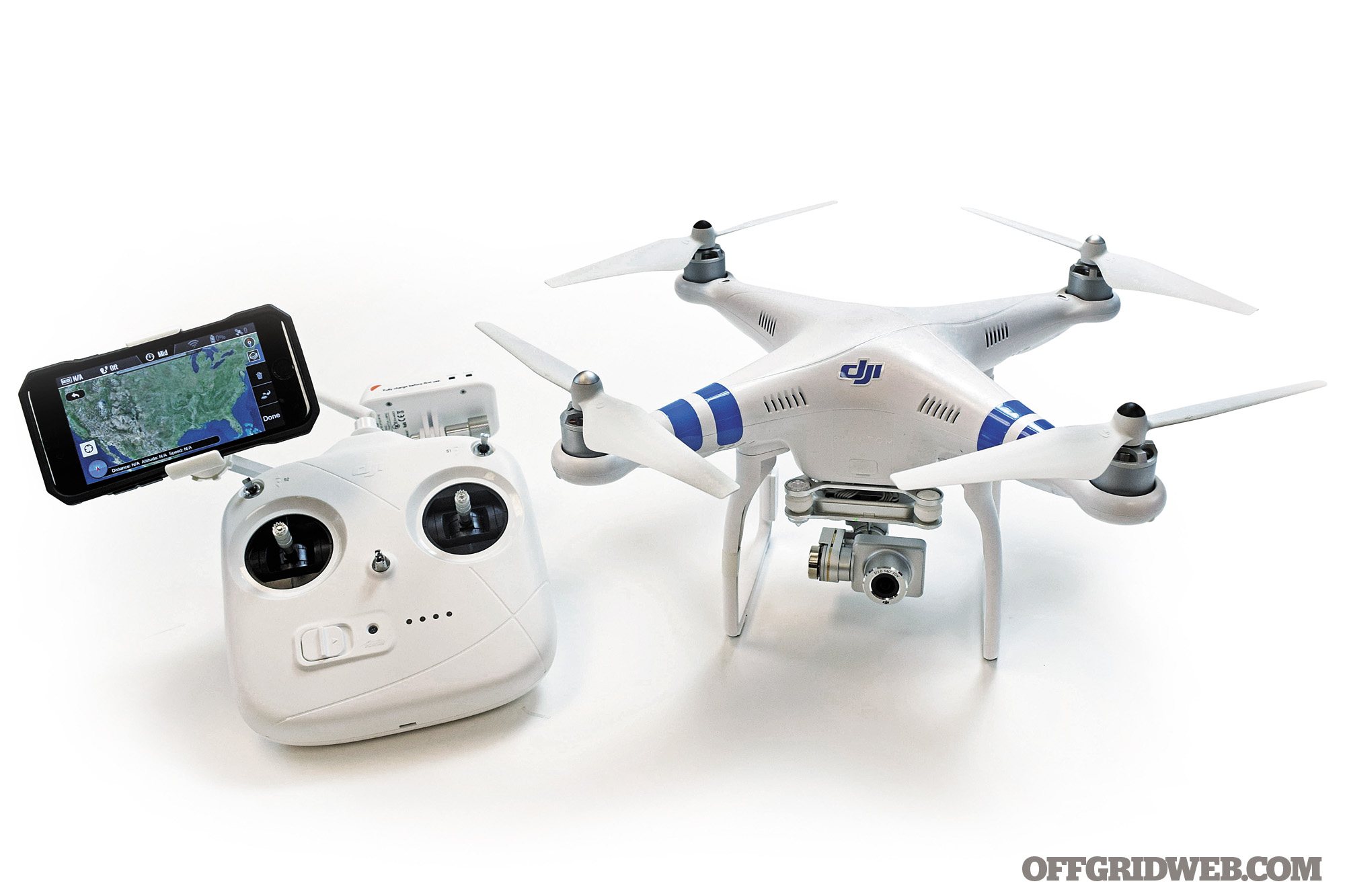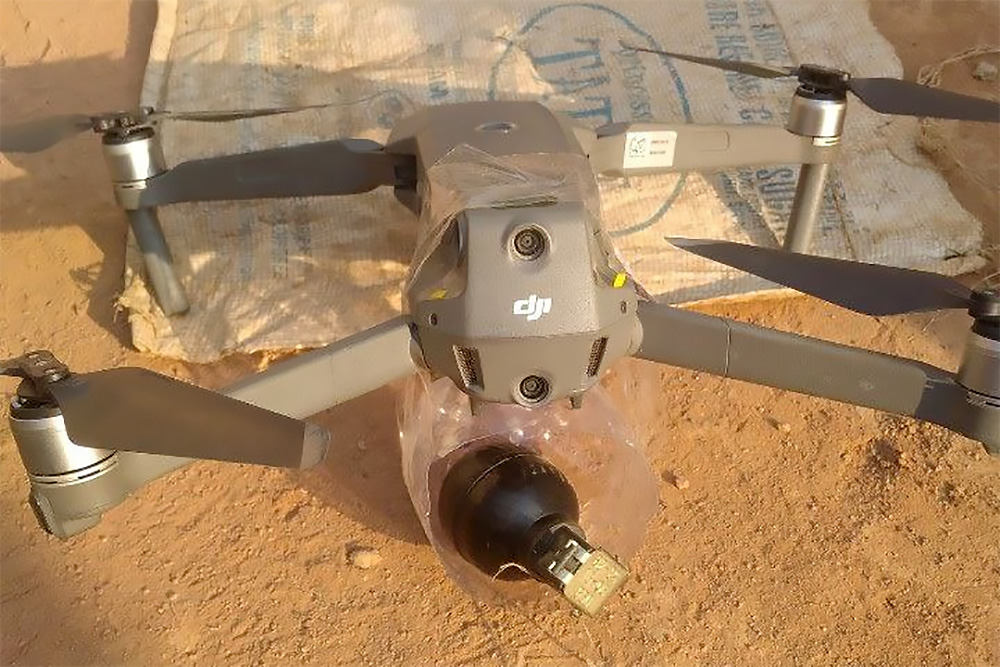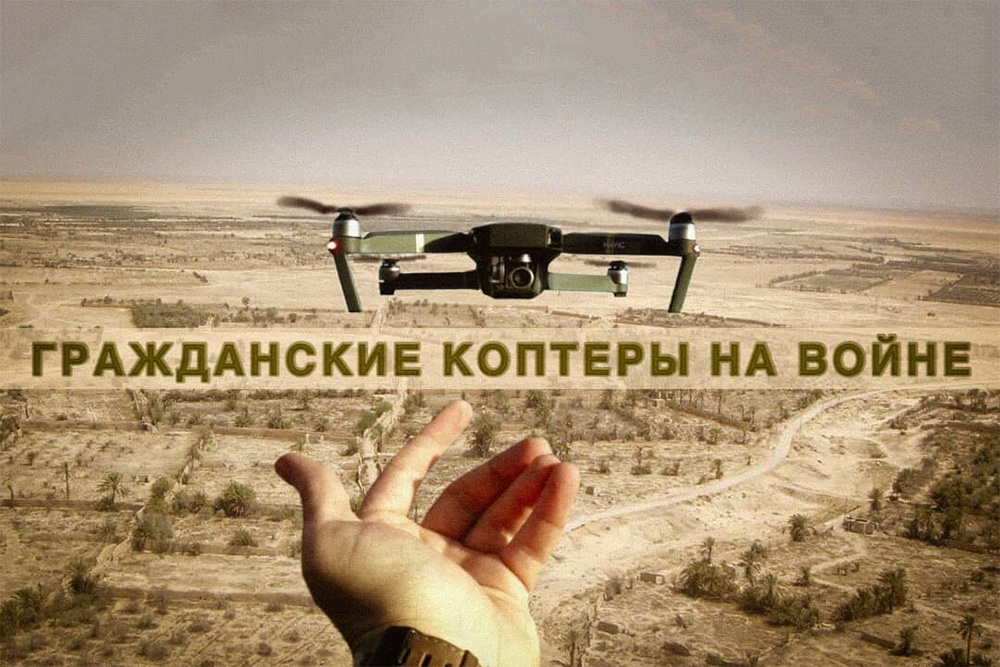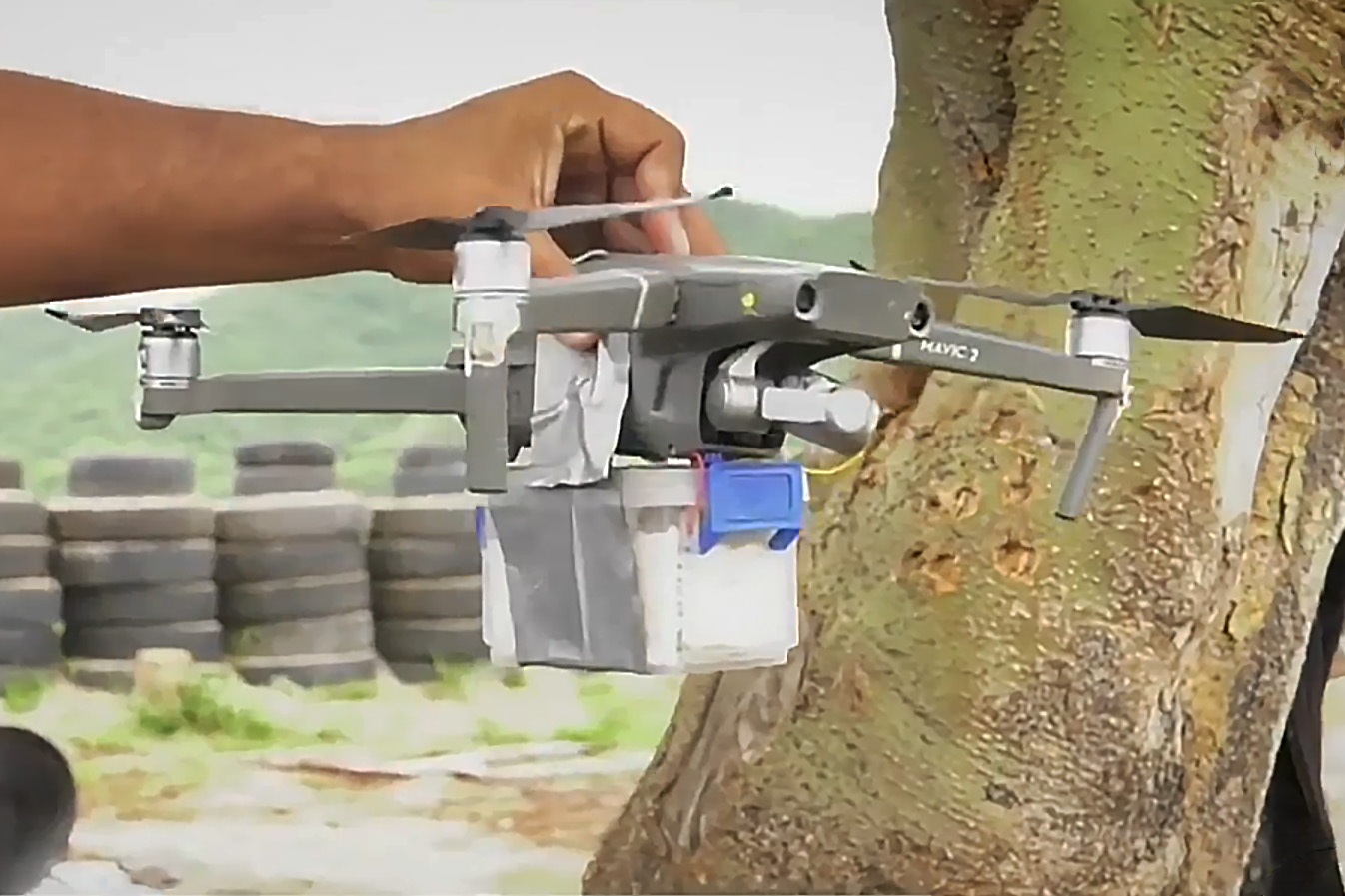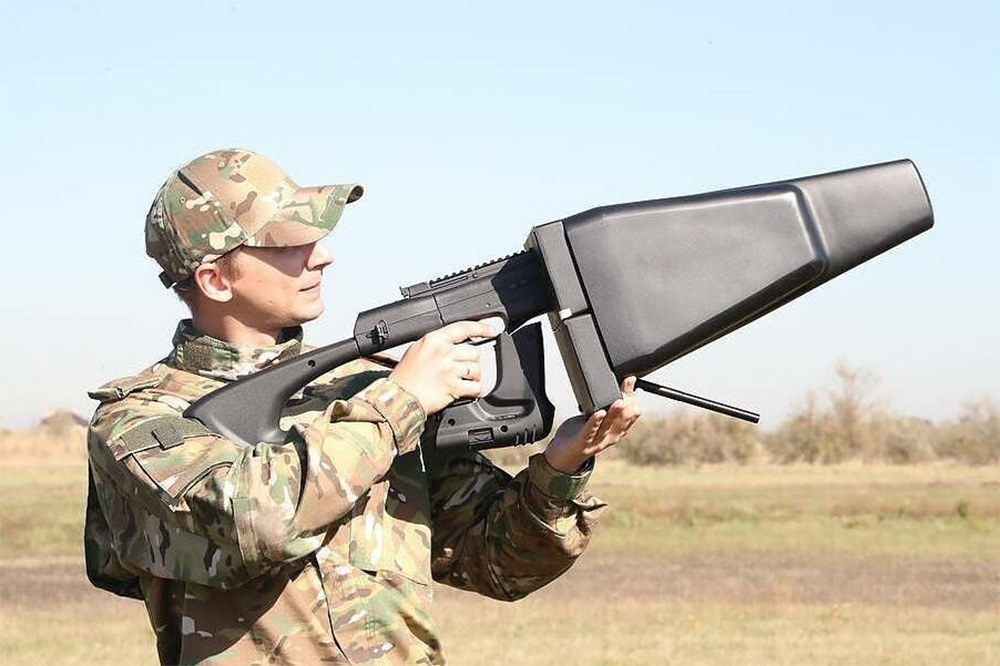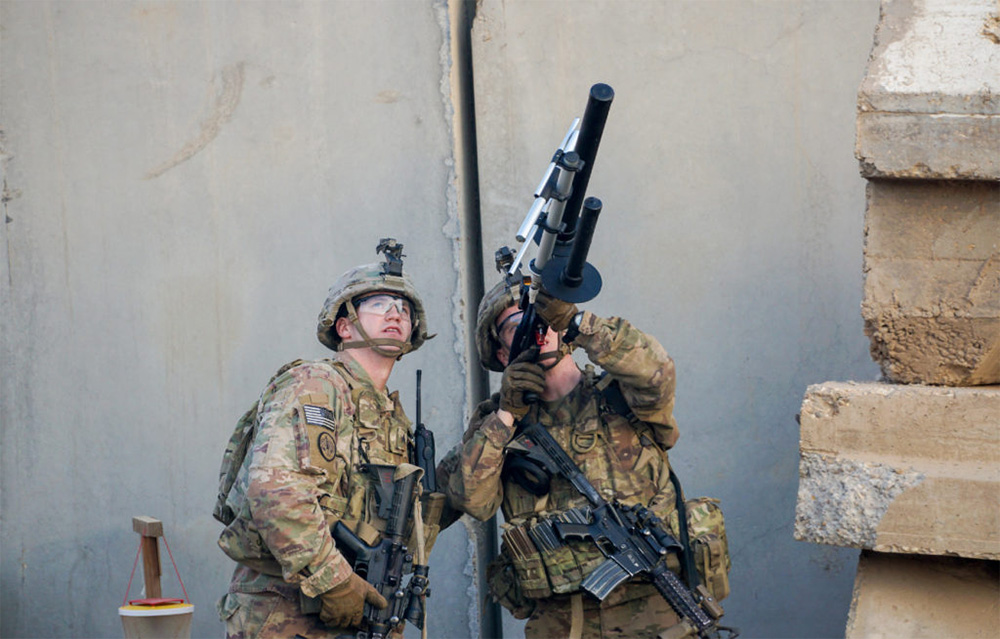It’s not uncommon for military technology to eventually make its way into civilian hands — after all, the Internet you’re using right now was born from ARPANET, a U.S.-Department-of-Defense-funded research project. From GPS navigation and microwaves to hemostatic bandages and duct tape, many items we now rely on are based on tech that was developed for military applications. Aerial drones are yet another example of this trend. Remote-controlled quadcopters are becoming more popular and affordable with each passing year, and are widely used by filmmakers, hobbyists, and even children. But there’s a dark side to these commercial-grade flying devices: they’re being turned into inexpensive, remote-controlled weapons by a variety of malicious groups. Read on as we take a look at some recent examples of weaponized drones.
The Military Origin of Weaponized Drones
Above: When you think of weaponized drones, you might picture something like this MQ-1 Predator UAV, which can carry camera equipment as well as Hellfire missiles. (U.S. Air Force Photo by by Lt. Col. Leslie Pratt)
Flying drones have been around longer than you might think. Various designs have come and gone since World War II, including gyroscope-driven “aerial torpedoes” and jet-powered German V-1 flying bombs. Camera-equipped reconnaissance drones rose to popularity during the Vietnam War, and eventually the two drone categories were combined to create aircraft that carried observational equipment (cameras) and weapons (bombs, missiles, or onboard explosive payloads). UAVs such as the Predator have played a pivotal role in countless 21st-century conflicts.
Loitering munition is another term associated with military drones, indicating a category of drone that flies in to destroy a target on a suicidal kamikaze mission. Some are directly operated by humans, while others have a degree of built-in autonomy. This term is also relevant to many of the crude “flying IED” drones we’ll discuss later in this article.
Commercial and Hobbyist Applications
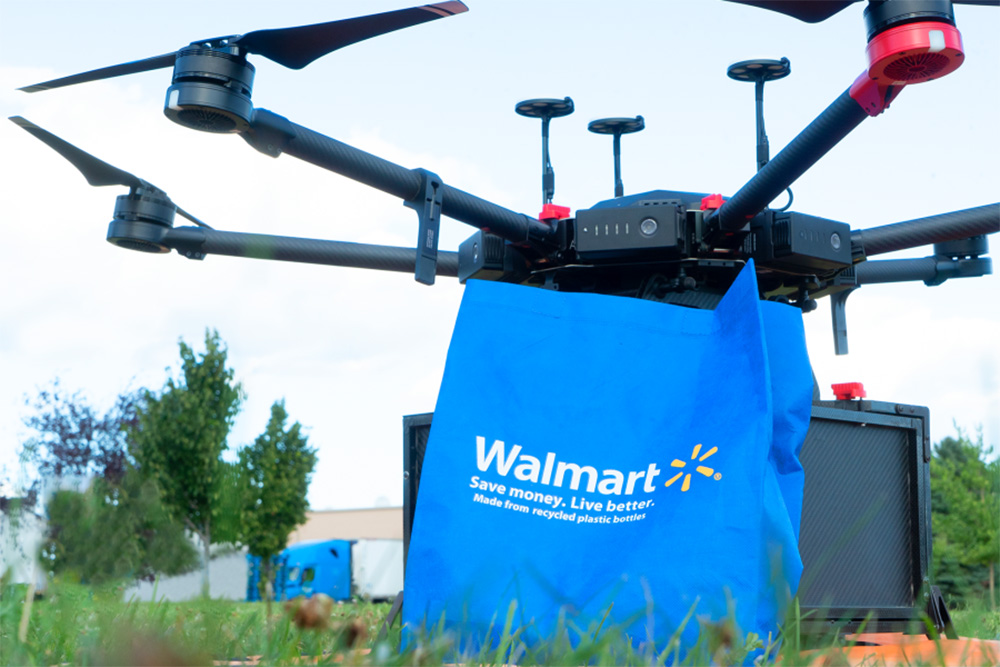
Photo courtesy of Walmart Press Center
In 2013, Amazon announced plans to begin delivering packages via commercial drones. In 2015, Flirtey (now known as SkyDrop) began delivering medical devices with the approval of the Federal Aviation Administration (FAA). The list of commercial adopters of drones has grown exponentially since then. In late 2020, Walmart announced drone-based delivery of “select grocery and household essential items” in trial markets.
As corporate adoption of drone tech grew, so did its popularity among civilians and hobbyists. As of December 2021, the FAA says there are more than 863,000 registered unmanned aircraft systems (UAS) in the United States. However, this number fell from 1.74 million in December 2020 — a result of a huge number of drone registrations that expired at the end of that year. This means the actual number of drones (including those that are currently unregistered) in the United States is likely to be well over 2 million.
Globally, Business Insider predicted annual sales of drones to exceed 2.4 million units in 2023. That’s a 67% compound annual growth rate.
Pandora’s Box is Open
Above: On December 21st, 2021, authorities in the Central African Republic seized this weaponized drone. It appears to be a DJI drone with a plastic jug that carries a Chinese Type 82-2 hand grenade with its pin tethered to the aircraft by a string. While obviously crude, its lethality shouldn’t be underestimated. (Photo via @Jack_Mrgln on Twitter.)
Aerial drones moved from the military to corporations, and eventually into the hands of ordinary people around the world. What once cost billions can now be purchased off eBay for a few hundred bucks (or less). Unfortunately, this inevitably got the attention of violent individuals who saw an opportunity to build remote-controlled improvised explosive devices (IEDs). Now, rather than attempting to ambush their enemies with stationary weapons or conduct vehicle-ramming attacks, they can fly weapons through open windows or stealthily drop them from several stories overhead.
Paramilitaries and terrorist organizations can’t afford Predator drones, but they can certainly afford to strap some explosives onto cheap quadcopters.
ISIS/ISIL began using this tactic as early as 2015 in Syria, and continued it in Iraq with devastating effects. War on the Rocks explains, “Terrorist groups have weaponized commercial drones for high-profile attacks around the world from Venezuela to Yemen, but ISIL’s drone program stood out for its large scale and impact on major combat operations. In its heyday in 2017, ISIL launched 60 to 100 drone attacks per month across Syria and northern Iraq.”
Videos of ISIS drone attacks have been widely distributed by the terrorist group for propaganda purposes.
Above: An image posted in December 2021 by a social media account linked to the Russian paramilitary organization Wagner Group. The group has been accused of “serious human rights abuses in Ukraine, Syria, Libya, the Central African Republic, Sudan and Mozambique,” according to a recent statement by the European Union. The inset text translates to “civilian copters at war.”
Outright terrorists are not the only ones using weaponized drones; paramilitary groups are also recognizing their effectiveness. Self-described mercenaries from the Russian-backed Wagner Group frequently post images alluding to the use of commercial drones on the battlefield. On December 15th, a statement from the U.S. State Department explained, “Countries that experience Wagner group deployments within their borders soon find themselves poorer, weaker, and less secure. … Wagner forces [have] stoked conflict and increased insecurity and instability, causing the deaths of local soldiers and civilians and undermining national sovereignty.”
Above: An illustration posted by a Wagner-Group-affiliated social media account shows a commercial quadcopter flying above armed mercenaries.
Drug cartels are also using drones more than ever, and not just for drug smuggling. In June 2021, Business Insider reported, “The bee-like sound of flying drones has become a new symbol for terror in small Mexican towns like Aguililla in the southwestern Mexican state of Michoacan. Families in Aguililla have been reporting bomb-strapped drones flying over their homes since early this year, in a new tactic used by cartels to fight for their turf.”
The following Spanish-language video from Noticieros Televisa features cartel personnel showing off weaponized DJI drones. Each drone carries a plastic container filled with C4 and steel ball bearings, linked to an electronic detonator that can be remotely triggered by the drone operator.
There have also been reports of the infamous CJNG cartel incorporating chemical weapons into its weaponized drone arsenal. Demoler reported, “In early October, one soldier was injured after the CJNG reportedly used explosives laced with insecticide on its drones in Tepalcatepec, Michoacan. … [Carbofuran] pesticide is one of the most toxic pesticides still in use and exhibits toxicity similar to that of V-series nerve agents. It is classified as an extremely hazardous substance in the United States and banned in Canada and the European Union.”
Anti-Drone Countermeasures
All this begs the question: what can be done to stop weaponized drones?
Above: A Russian anti-drone weapon said to be “capable of repelling attacks not only by single drones but also their massive use from different directions and altitudes within a radius of at least 3 km.” (Photo via Rosoboronexport)
During the Syrian Civil War, ISIS drone attacks became so common that Russian and Syrian opposition forces began using electromagnetic jammers and anti-drone “guns” to interfere with them. Beyond high-tech electronic warfare systems, Mexican drug cartel members have been seen wearing portable signal jammers to defeat rival factions’ drones — check out our article on signal jammers for more details.
Above: Two U.S. Army troopers operate a Drone Defender device in Iraq during an October 2018 counter-unmanned aerial system drill. (U.S. Army photo by Capt. Jason Welch)
Although the FAA has placed increasingly tight regulations on drone ownership and use in the United States, we know that motivated individuals won’t be deterred by these laws. Drones are still widely-available and easy for novices to operate. Since civilians don’t have access to military anti-drone tech and can’t legally use signal jammers, our best option may be simple situational awareness. Keep an eye on the sky, and if you see a suspicious-looking drone in the area, it might be time to investigate further or seek shelter.
Closing Thoughts
A December 2021 NBC News article stated, “Some experts believe the spread of the semi-autonomous weapons will change ground warfare as profoundly as the machine gun did.”
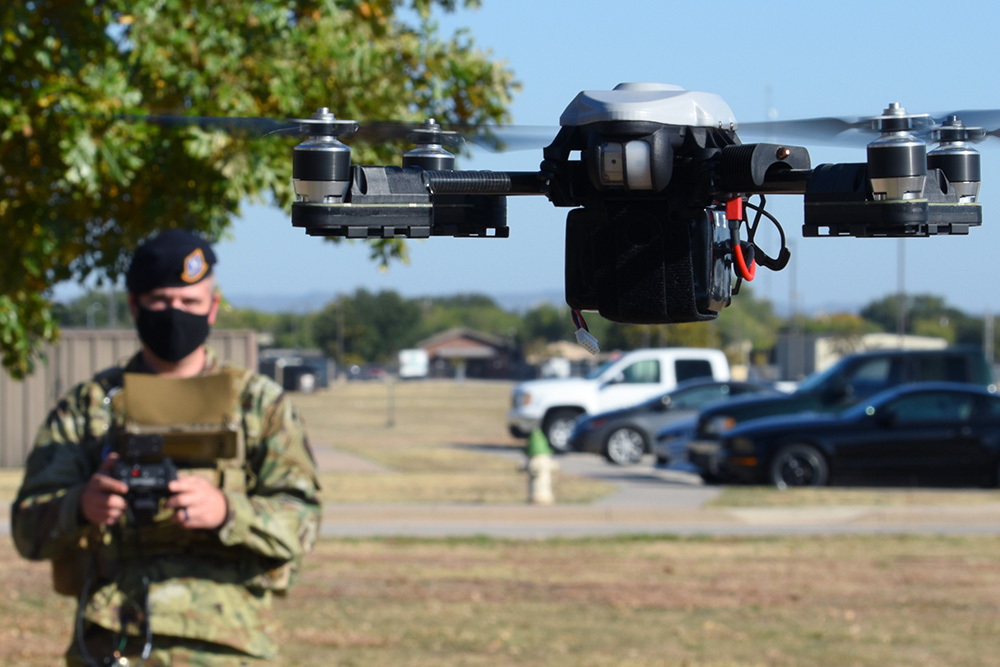
U.S. Air Force photo by Airman 1st Class Ethan Sherwood
The point of this article is not to demonize drones, or to imply that they have no legitimate peaceful applications. Drones, like most forms of technology, have the potential to be used to improve our lives or to inflict harm. But as prepared civilians, we should recognize the possibility — whether slim or substantial — of weaponized drones being used to attack soft targets within our own borders.
The post Weaponized Drones: The Spread of Commercial-Grade Flying IEDs appeared first on RECOIL OFFGRID.



